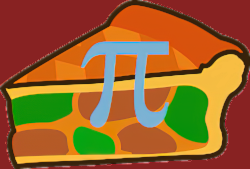Apple
In the latest version of macOS 12 Monterey, Apple has done something that they possibly regard as an enhancement to security; however, it has not been thought through properly, or maybe it has… Apple has always had the attitude that they know best and that they will tell their users what they should have and need.
That is all well and good unless you happen to be an astronomer and you wish to use a UVC device to capture images or video of astronomical objects.
A UVC device is a USB Video Class device. These are devices capable of streaming video over USB, like webcams, digital camcorders, transcoders, analog video converters and still-image cameras. Many of these devices are used by astronomers as devices to capture astronomical data.
Cameras such as the SV105 and the SV205 are sold as astronomy cameras and electronic eyepieces though they derive from webcam type devices. However, other, higher-end astronomical imaging devices such as The Imaging Source DMK, DBK, DFK series of cameras however, are also basically, enhanced UVC devices.
What Apple have done in the latest version of macOS 12 Monterey, is to remove permissions for applications to access UVC cameras, with the exception of course of apple-included apps such as Photo Booth. It would, of course, be possible to pay Apple money and jump through hoops to free an application from this restriction, but this would never be practical for any astronomy imaging software.
Of course, this policy will make it very difficult for malware to access the built in UVC webcam or attached webcam, because it would not have permission to do so.
Unfortunately, all astronomical imaging software available for imaging with a Monterey Mac is unable to access UVC imaging devices.
Happily this restriction does not apply to astronomical cameras that are not UVC devices.
A result of this is that AstroDMx Capture for macOS will not now support UVC devices. Of course, Nicola will research any possible way around this problem.
If you have a proper astronomy imaging camera such as an SV305, a ZWO an Altair, Bresser, Tuptek etc. or a supported DSLR for example, there will be no problem with using AstroDMx Capture for macOS as usual.
Raspberry Pi
If you are running the Raspberry Pi OS Buster version, then nothing has changed. However, if you have upgraded to the latest Raspberry Pi OS Bullseye version, the Pi cameras will no longer work. Without deprecating the camera system, The Raspberry Pi Foundation has completely changed the way that the Pi Cameras work. In fact, this leaves everyone, including the Python users, without support.
This is a strange and atypical behaviour for the Pi Foundation, who, hitherto have gone to pains to ensure back compatibility. They have produced a completely new API depending on libcamera libraries. This means that things will have to be re-written from scratch.
The Pi Foundation’s attitude is that for the moment, the Buster version of Raspberry Pi OS is still available as a legacy version and one can use that version if one wishes one’s Pi camera programs to work.
However, the Bullseye version is here with its new way of doing things and until decent API documentation is produced, the Pi cameras are going to be in trouble.
A result is that for the moment, AstroDMx Capture for the Raspberry Pi will no longer support the Pi cameras unless the Buster legacy OS version is used. This will be work for the future.
